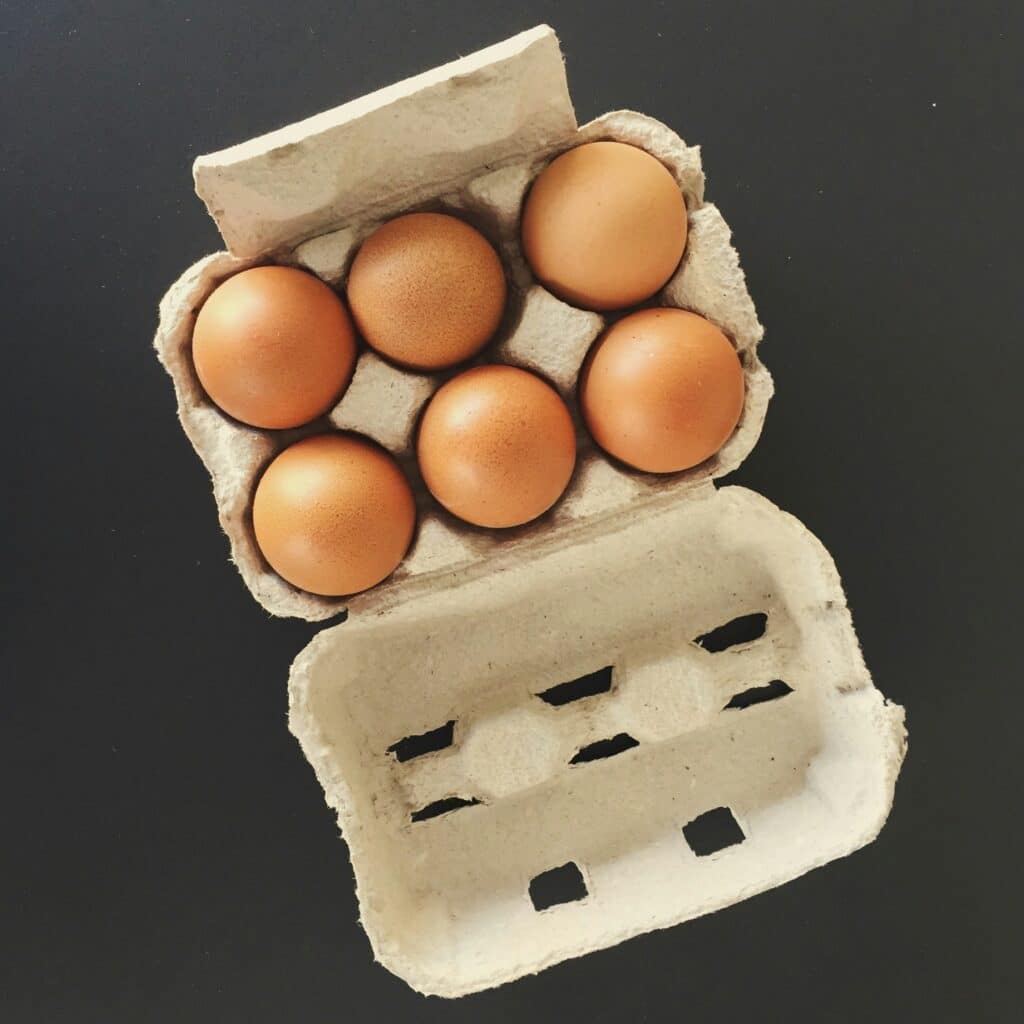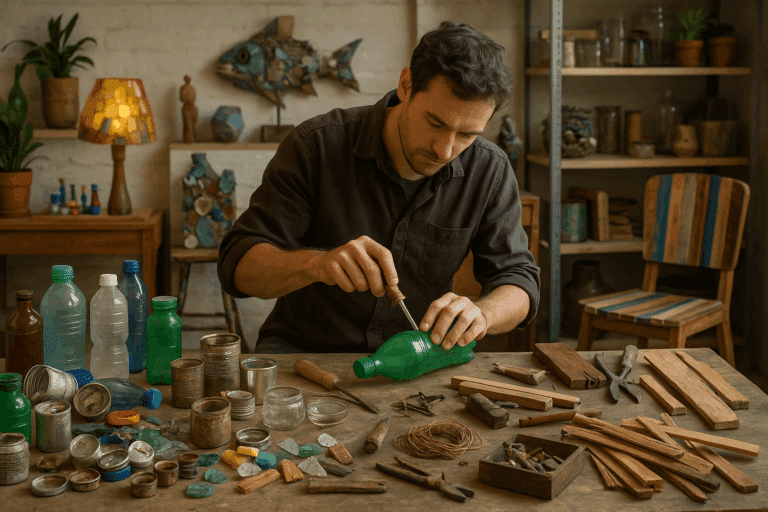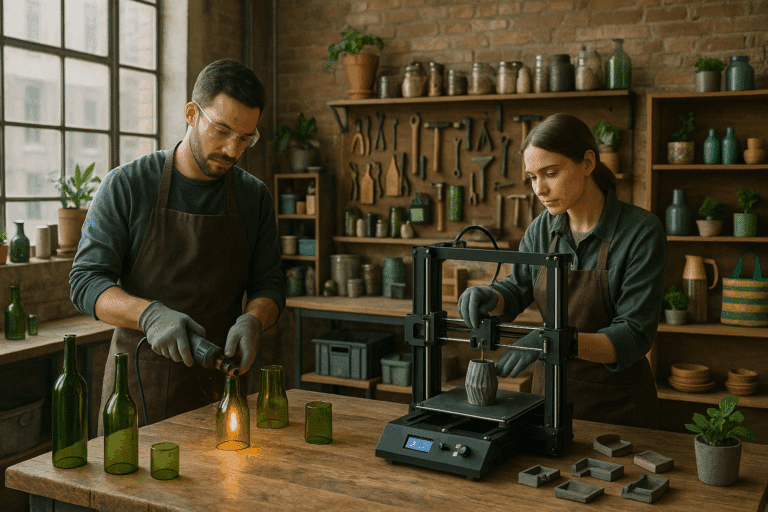Our focus for today delves into a unique method that might revolutionize your gardening experience: using egg carton seedlings to grow your garden. This approach not only recycles waste but also creates a conducive environment for plant growth.
Embarking on this journey, you’ll learn how to repurpose discarded egg cartons as practical seed starters. This innovative method serves as an eco-friendly alternative to conventional plastic seedling trays. The inherent properties of egg cartons make them a preferable choice, including biodegradability and perfect size for seedlings.

Egg cartons—often tossed away after a single use—become, in this approach, a cornerstone of low-impact gardening. Their humble appearance belies the potential they hold. Composed primarily of paper pulp or cardboard, they break down naturally in the soil, enriching it with organic matter while minimizing landfill waste. It’s a small but powerful way to reduce your environmental footprint.
Additionally, egg cartons are often available in abundance, making them an ideal choice for budget-conscious gardeners. Whether you’re in a rural homestead or a city apartment with limited space, this method offers accessibility and flexibility. You can place them on sunny windowsills, balconies, kitchen counters, or greenhouses—anywhere that offers warmth and light.
Next, we will explore the step-by-step process of using egg cartons for starting your plants. From the moment you place the seeds in the cartons, to transplanting the seedlings into your garden, every stage will be explained in detail. We will also touch on the essential care tips to ensure your plants thrive from this process.
Finally, we will uncover the multitude of benefits this ingenious method offers. Beyond its sustainability and cost-effectiveness, it contributes to creating a healthy ecosystem within your garden. So, for those green thumbs seeking to elevate their gardening practices while fostering environmental consciousness, this exploration of using egg carton seedlings could be your next game-changer. 🌱💡
Creative Customizations, Gardening Innovations, and Tips for Making the Most of Egg Carton Seedlings
Using egg cartons for seedlings doesn’t mean you’re limited to one fixed method. Gardeners can get creative by labeling each cup with the name of the plant using a marker or sticker. You can even color-code your egg cartons based on the type of plant you’re growing. Some gardeners like to decorate the cartons with water-resistant paint to make the seed-starting process visually pleasing, especially if children are involved. This not only adds an aesthetic charm but also helps children stay engaged and learn more about gardening. Setting up informational stations at planting events can turn simple gatherings into rich learning opportunities for all age groups. Community gardening projects using egg cartons have also been shown to improve mental health and reduce urban food insecurity. In climates with extreme temperature changes, gardeners can even double-line the cartons for extra insulation.
You can also reinforce the structure of the egg carton by placing it in a shallow tray or baking sheet, especially if you’re using water frequently. This prevents the carton from getting soggy and tearing prematurely. If you live in an area with high humidity or heavy rain, placing a clear plastic cover (like a recycled salad box lid) over the cartons can help mimic a greenhouse effect, aiding in germination while protecting the seeds from excessive moisture or pests. Including pollinator-friendly plants like lavender or calendula in these cartons helps establish a thriving ecosystem right from the start. Using organic soil and heirloom seeds further enhances sustainability and biodiversity, offering your seedlings a stronger start and greater resilience when transplanted outdoors.
Companion Planting Using Egg Carton Starters
Another advanced technique to explore is companion planting right from the seedling stage. This involves starting plants that grow well together in adjacent cups. For instance, basil and tomatoes make excellent companions in the garden, and their seedlings can be grown side-by-side in the same egg carton. When transplanting, you can even bury the connected cups into the soil, maintaining the proximity that benefits their growth.
Strategic pairing not only optimizes your garden space but also supports natural pest control, better nutrient uptake, and improved flavor for certain vegetables and herbs. For example, marigolds deter aphids and nematodes and can be started next to vegetables they help protect. Learning which plants benefit each other can enhance your entire garden’s productivity, and using egg cartons to start them simultaneously is a great way to implement that knowledge early on. This approach supports efficient garden design, maximizes yield, and reduces chemical dependency.
You can also plan rotations and plant successions within your cartons. Once early crops like radishes or lettuce are harvested, the same carton spaces can be reused for late-season crops. This habit builds a year-round gardening mindset and fosters resilience by encouraging experimentation and adaptability.
Involving the Community and Children
This gardening method is also an excellent educational tool for children and community programs. Schools and local community centers can initiate seedling programs using egg cartons to teach sustainable gardening practices. Kids can participate by decorating their own cartons, choosing seeds, and learning about plant life cycles. This hands-on learning creates a strong connection to nature and instills values of sustainability and responsibility.
These projects are ideal for integrating with subjects such as science, environmental education, and art. Children learn about photosynthesis, water cycles, soil health, and food systems while engaging their creativity and developing fine motor skills. It’s a holistic educational opportunity that engages minds and hearts.
Gardening clubs or neighborhood green initiatives can collect egg cartons from households and host group planting days. This not only reduces waste collectively but also strengthens community bonds. Local businesses such as cafés or bakeries often have surplus cartons and may donate them to support sustainable causes. Community gardens can use egg cartons to launch seasonal planting drives, offering seedlings to residents who may not have the resources or knowledge to start gardens on their own.
These initiatives can serve as springboards for larger sustainable farming practices or even community food security programs. With the help of volunteers and outreach, neighborhoods can turn unused land into productive spaces, inspired by simple, low-cost beginnings like an egg carton filled with soil and seeds.
TTroubleshooting Common Issues
As with any gardening method, a few challenges might arise when using egg cartons. One common problem is overwatering. Since the material is absorbent, egg cartons tend to hold moisture longer than plastic containers. Ensure you water gently and allow for adequate drainage—poking small holes at the bottom of each cup helps. Using a spray bottle instead of a watering can also offers better control over moisture levels, ensuring the soil remains damp but not soggy.
If you’re working with especially moisture-retentive potting mixes, consider mixing in a small amount of sand or perlite to improve drainage and reduce the chance of waterlogging. Monitoring the weight of the egg carton can also help; if it feels heavy, skip watering for a day or two.
Another issue could be mold growth due to excess humidity. If you notice mold forming on the surface of the carton or the soil, try increasing airflow around the seedlings or moving them to a sunnier, less damp location. A small desk fan set on low can help maintain circulation. You can also sprinkle a small amount of cinnamon on the surface as a natural antifungal solution. Cinnamon has the added benefit of being safe for seedlings and easy to apply.
Sometimes, seedlings may appear leggy or pale, which usually signals inadequate light. Ensure your egg carton trays receive at least 6–8 hours of sunlight daily or are placed under a full-spectrum grow light for indoor cultivation. Rotating the trays occasionally ensures even growth and prevents the seedlings from leaning too heavily in one direction.
Alternative Materials to Pair with Egg Cartons
While egg cartons work wonderfully on their own, combining them with other recycled materials can enhance their effectiveness. Paper towel rolls cut into small rings and placed inside each cup can give additional root depth and structure to taller seedlings. These inner supports can be especially useful for plants like cucumbers or squash that require a deeper root system early on.

Used coffee grounds mixed into the soil can enrich nutrients, especially for acid-loving plants like tomatoes and peppers. Just make sure to use grounds in moderation—they should be aged or composted slightly, as fresh grounds can be too acidic. Eggshells, crushed finely and sprinkled into the soil, add calcium and deter some pests like slugs.
Recycled clear plastic bottles can be used as makeshift mini-greenhouses over individual egg cups. Simply cut the bottoms off and place the top halves over the seedlings. This helps trap heat and moisture, creating a mini-climate ideal for germination. Remove the covers once the seedlings sprout to prevent mold and overheating.
You can also use shallow aluminum trays or yogurt lids as a water-catching base beneath the egg cartons, providing stability and protecting your growing area from moisture damage.
Sustainability Through Seasonality
Egg carton planting isn’t limited to spring or summer. Fall seedlings for cold-hardy greens like kale, spinach, and arugula can be started indoors using this method and later transferred to cold frames or raised beds with protective covers. The structure of the carton makes it easy to transport these seedlings directly into the garden, even when temperatures begin to drop.
Even in winter, herbs like parsley, thyme, and chives can be grown indoors using egg carton trays placed under grow lights or near south-facing windows. For added efficiency, reuse spent egg cartons from earlier seasons—just ensure they’re clean and mold-free. This makes the practice a year-round sustainable gardening solution that adapts to seasonal changes and maximizes your growing potential.
The flexibility of egg carton gardening encourages continuous learning and innovation. Whether you’re growing microgreens in January or transplanting tomatoes in June, this simple method remains adaptable, effective, and eco-friendly.
Conclusion: Grow Beyond Limits
Ultimately, the simplicity of egg carton seedlings masks their incredible versatility. From beginner home gardeners to experienced horticulturists, this technique offers room for customization, creativity, and learning. Whether used in schools, community gardens, apartments, or suburban backyards, egg carton gardening is a gateway to greener habits and better food resilience. Keep experimenting, keep planting, and let your garden be a testament to the power of resourceful, earth-friendly innovation.n grow your garden and your green thumb simultaneously.
Conclusion
In conclusion, the method of growing your garden with egg carton seedlings presents a sustainable and cost-effective way to start your plants. This innovative approach not only saves you money but also allows you to partake in an eco-friendly gardening practice. It turns out that an everyday household item like an egg carton can be the perfect start for your little seedlings.
This method not only reduces waste but also provides a healthy and organic environment for your plants to grow. The egg carton seedlings method is a testament to the power of sustainable living. By using materials already at hand, you’re not only nurturing your plants, but also the environment.
The affordability of this method is another great advantage. It cuts out the need for expensive gardening tools and equipment. It’s a simple yet effective way to grow your plants from scratch.
Beyond the practical benefits, this gardening approach encourages mindfulness and a deeper connection with nature. It invites us to slow down and appreciate the process of nurturing life from a humble beginning. Whether you’re growing herbs on a windowsill or preparing seedlings for a backyard harvest, the act of planting becomes both meditative and meaningful.
So, start today! Put those empty egg cartons to use and watch your garden flourish. Embrace this sustainable and cost-effective method. Remember, every small step we take towards sustainable living counts. This method is not just about growing plants, it’s about cultivating a lifestyle that values and respects the environment.
Grow your garden with egg carton seedlings: it’s simple, affordable, and sustainable. Indeed, the best things in life are often the simplest. Happy gardening! 🌱💚



